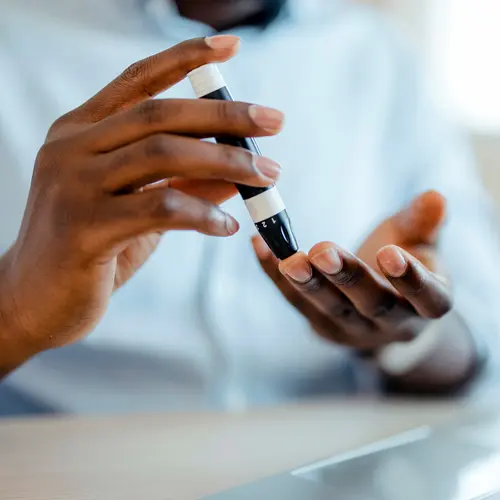To manage diabetes and keep your blood sugar under control, you may need to rethink your diet. Fruits, vegetables, whole grains, lean meat, fish, and low-fat dairy should be on the menu, while most fatty, sweet, and salty foods should not.
That doesn't mean you have to say goodbye to all your favorite snacks. In fact, a few strategically planned ones during the day can help keep your blood sugar levels steady between meals. You just need to choose those treats wisely.
Diabetes-Friendly Snacks
The best snacks when you have diabetes are high in fiber and protein, and low in sugar and salt. Good options include fruit, vegetables, whole grains, and low-fat dairy.
You'll stay full and keep your blood sugar stable longer if your snacks combine lean protein and healthy carbs, like:
Snacks that are high in fiber are also filling, like:
- Light popcorn
- Apples with cheese or peanut butter
- Sweet peppers, celery, and carrot sticks
- Dried fruit and nuts
If you're in the mood for something sweet after a meal, try one of these lighter alternatives to candy, cake, and cookies:
- No added sugar frozen fruit bars
- Plain yogurt topped with fresh fruit or canned fruit packed in fruit juice
- Unsweetened applesauce
- Frozen grapes
- Sugar-free gelatin
How to Modify Your Favorite Treats
You'll want to stay away from foods that are highly processed or have lots of added salt or sugar. That includes junk foods like potato chips, cheese puffs, candy, and cookies.
You don't have to banish these foods from your diet. But when you do eat them, keep the portions very small. Better yet, substitute healthier versions like these:
- Craving potato chips? Go for the baked kind or some air-popped popcorn.
- Want chocolate? Cover some rice cakes in dark chocolate.
- Instead of cheese puffs, try some snack mix made from cereal.
- Pizza night? Try a whole-wheat English muffin with tomato sauce and mozzarella cheese.
- Cookie craving? Try a graham cracker.
- If you're a fan of soda, substitute diet soda, light lemonade, or some sparkling water with a dash of fruit juice.
Smarter Snacking
You don't have to deny yourself treats. Just enjoy them in moderation. If you crave chocolate, have a square of dark chocolate. If you're in the mood for ice cream, order a kids' sized cone or get a scoop of low-fat frozen yogurt instead.
Even a healthy snack can cause you to gain weight if you eat too much. And that could make it harder to control your diabetes. That's why it's important to keep your snacks small. Don't bring a family-sized bag of popcorn or box of cookies into the den while you watch TV. You could eat the whole thing. Measure out one serving and put the rest of the box or bag away.
Make sure that each portion you give yourself contains no more than 150 calories and 15 to 30 grams of carbs. Examples include:
- 15 mini pretzels
- 3 cups of light popcorn
- 1 cup of berries
- 1/4 cup trail mix
Before you head for the pantry or fridge, decide if you're really hungry. Is a growling stomach behind your desire to eat, or are you just bored or stressed? If you're not hungry, find something else to fill your time.
When you do snack, try to do it at about the same time each day. If you stick to a schedule with both snacks and meals, it'll help keep your blood sugar steady throughout the day.
If you're still not sure about portion sizes, the types of snacks to choose, or when to have them, ask your doctor if they can refer you to a dietitian for help. Your doctor could also let you know if the foods in your diet will help you control your diabetes.

